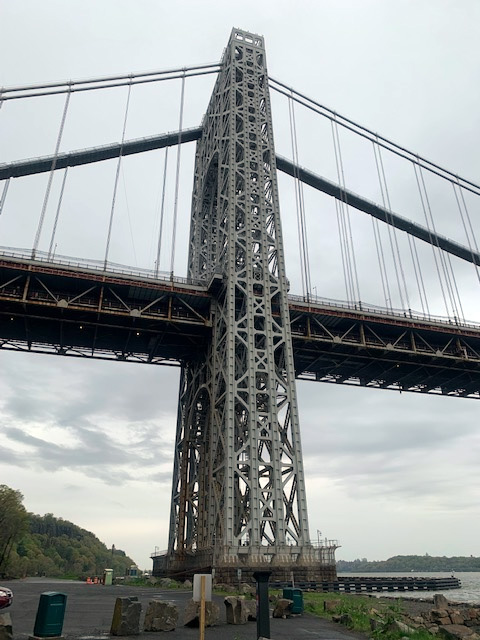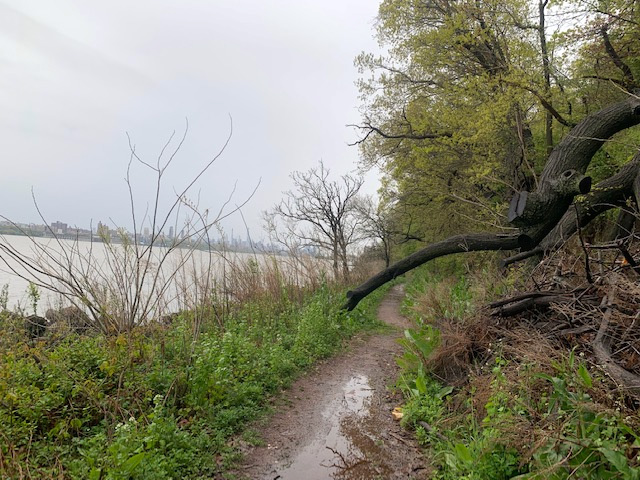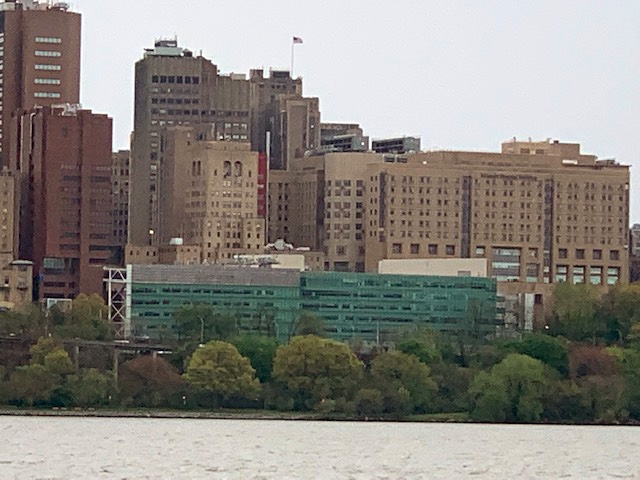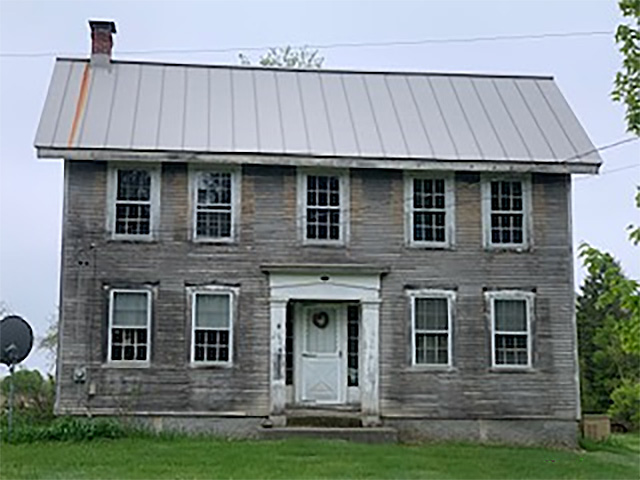A Blog of Personal Thoughts
Pathways to the Past
June 2022
I took a three-week vacation before attending the annual Behavior Analysis Association International Conference in Boston on Memorial Day weekend. This was a great opportunity for me to tag on a vacation back East before the event. My pathways to the past included visiting friends and relatives, then ending up in the city where I was born.
I chose friends and relatives who live in country places. Virginia lives on five acres in New York just on the other side of the Hudson River. When I first arrived on her gorgeous five acres of green, the trees had no leaves. When I left a week later, the leaves were fully out. I want to say bloom, but do leaves bloom?
During the most intense part of the lockdown, Virginia drove around the area to hidden places such as the foot of the George Washington Bridge on the Jersey side. She told me the story of Dead Dog Park on the Manhattan side, which now lies beneath the Columbia University Psychiatric Hospital.
 |
The foot of the George Washington Bridge, New Jersey side. |
 |
Walking the path away from the GW Bridge, Manhattan on the other side of the Hudson. |
 |
Columbia University Psychiatric Hospital atop Dead Dog Park. |
When we were young teenagers we went to Palisades Amusement Park. I had never ridden a roller coaster. We didn’t have enough money left. I walked up to three nuns, explained the situation and they gave me enough to add to what we had. It was cheaper to walk to and across the GW Bridge and use our subway tokens to get from 178th Street down to the Village (Greenwich Village) where we lived. On the walk to the Bridge, I desperately needed to go to the toilet. As we passed through a neighborhood, I went and knocked on a stranger’s door and she let me in. This was 1956 perhaps, and nothing anyone would dare do today.
Virginia and I also walked across the Queensboro Bridge because we’d never been to Queens. We walked around for perhaps half an hour and walked back to Manhattan. Another time, age 12, we sat on the window ledge of her 9th floor apartment smoking cigarettes. We also started fires using a mirror to reflect on paper till it began to burn, small fires in an ashtray. Once we used a pewter coaster and when the fire grew too large, Virginia went to the kitchen and brought back a saucepan. We put the fire in there and continued to add to it. When it grew too big again, we dumped it down the toilet and flushed it all away. So we thought. Her mother came home from work, used the toilet, flushed it, and it overflowed, not only onto the bathroom floor but also over the marble doorsill and into the hallway. Her mother called the building super to “fix” the broken toilet only to find the pewter coaster fit perfectly into the bend to block the water. I realized this trip that my friend, Virginia, was the person I had my most daring and crazy adventures with. I think I had a rather calm childhood.
This trip we ventured into Manhattan for dinner with other grammar school classmates before seeing Hamilton. If I’d been staying in Manhattan, I would have bought a ticket for the next night and probably the night after that too. Lin-Manuel Miranda is today’s Shakespeare, so fine is the play’s language, topic, lyrics, and even the music. All of it.
Plunging me into the midst of these times of the twenty-first century, my friend, Abby, called me to say not to come visit her. She had been with her daughter and family in previous days and her family had all come down with COVID. We will meet on the Internet later this month. COVID, Internet and other parts of these times are today’s life.
I next flew to Bangor, Maine to visit my cousin, Doug. Doug lives 20 miles out of Bangor in an old Maine farmhouse, the newest part, the big house, was built in 1860. It is part of the “big house little house back house barn” typical of old Maine farms. A family first built the little house, then the back house to connect to the barn. Last came the big house in the front. Many of the barns burned due to the storage of hay that would combust in winter. Doug’s barn had burned long before he and his wife bought their place. Such house-barn connections occur in New Hampshire and Vermont as well. The eighteenth and nineteenth centuries were still in the Little Ice Age.
 |
Doug’s house, the big house. It had been covered in yellow siding, which they removed. |
 |
Doug’s place—big house, little house, back house, but the barn burned down. |
I love his place—its remoteness, history, greenness, and the walks. He toured me around to the coast as well as central and western Maine, all familiar places but good to see again. We went to Orono, where my family lived when my father was on the faculty and a department head at the University of Maine's only campus in those days.
Doug and I went to Moosehead Lake, Dexter, Guilford, and nothing looked any different from when I lived in Orono 70 years ago. I saw too many rundown houses, old and new cars in driveways and front yards, unpainted houses, and more far more evergreens than houses. Sadly, it is a state that speaks of poverty, yet it remains one of my favorite places on the planet. It speaks of ocean, open spaces, warmth of neighbors, a spirit of New England that is still a part of me. It fills my soul. Where I live in Alaska reminds me of Maine. On my way home here, I feel like, and say aloud, “I’m on my way to Millinocket” only from “town” here, it’s two miles to my place. From Orono, it was about 40 to Millinocket. The daydreams and comfort I felt and feel driving the road among the evergreen trees is irreplaceable.
Doug and I had not seen one another since we were teenagers sixty years ago. I had had serious conversations and socialized with his older brother then but not with Doug. We picked up where we should have left off. We talked about the state of the country, the state of the planet, changes in our lives, our personal thoughts of these days, organic farming, eating well, our own and larger family (our mothers were sisters), each of us living at 87 State Street, the address of my family home in Framingham Centre. I wonder how we could have missed out on all those years of friendship.
From Doug’s place I went to visit my oldest friend Peggy who says “We’ve known one another before we knew we knew.” I say we’ve known one another since babyhood. She’s four weeks younger than I, and our brothers used to push us in our baby carriages around the neighborhood of State Street and Church Street. Maybe they even went up to the campus of Framingham State Teachers College as there was no summer school in those days. It was a quiet area. My house had an acre as did many other houses, and Peggy’s house was on land that went down the hill to the railroad tracks. We used to go down there and wave at the World War II soldiers as the troop trains went by. After the war, we waved at the engineer and the caboose man.
Yes, we talked about the things we did, one of which no young people would do today. At the age of four, all we had to do was tell our parents where we were going and when we’d be back. We visited old retired neighbors, walked up in the college, climbed the O.A.T.—the old apple tree, and trees at my house. We walked across Route 9 to the Centre and the Common, went to Edgell Library, the Rexall Drug Store, the Living Room Library where Peggy’s mother and my Aunt Mary worked.
In today’s world, no one would let two four-year-olds cross the busy four-lane road that went and still goes from Worcester to Boston, but Peggy and I did it almost every day. In winter, it was our route to school. We rode our bikes everywhere—to watch the Boston Marathon as it passed from Hopkinton through Framingham on Waverly Street. One of my sisters said we couldn’t possibly have gone that far, but since we told no one, no one could object. All we ever said was we were going for a bike ride. One time we saw one runner. We only watched it once for it was far more boring that riding to downtown Framingham or going to Framingham Centre or climbing trees or ambling around the college.
From Peggy’s home in Fairhaven, the home of many whaling ship sea captains who sailed out of New Bedford, I went to Boston. Walking around the city, whether Newberry Street, Tremont Street, Faneuil Hall, the Public Garden, passed Copley Square, or even the new-to-me waterfront, I felt emotional. I often welled up with tears. I had many memories of going to Boston with my mother and a few times with both my parents. My mother never took us more than one at a time. What a special day we always thought that was. None of us ever felt left behind—too many other things to do at home. My mother and I went to Filene’s Basement, the prototype for all the current discount stores that have become chains. She could walk up to a rack, sniff a glance and pick out the highest quality item for the lowest price on the rack. Oh I don’t like this, I thought, but once on me, it looked gorgeous. How she did it, I never learned. I’d check all the prices and original sources for the item and she was right. Meanwhile, she was off to another rack. Being in Boston makes me miss those halcyon days of my childhood, young adulthood, and my close, strong family.
My three-week holiday closed in Boston with the Behavior Analysis Association International Conference learning much, sharing much, and seeing many very longtime work colleagues who have become friends and meeting new ones who are already becoming friends. My mother always said to keep in touch with old friends. Now I know why: they are roots to oneself.

|
